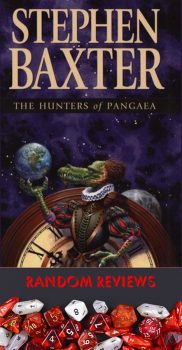Random Reviews: “The Modern Cyrano” by Stephen Baxter

Not only did Stephen Baxter win the first Sidewise Award for Best Short Story and the second Sidewise Award for Best Novel, but he went on to serve on the Sidewise Award jury for several years, so he has very strong alternate history credentials. His short story “The Modern Cyrano” is subtle alternate history set during the middle of the nineteenth century.
Written as a series of entries in Queen Victoria’s journal during the period from September 1849 through May 1851, Baxter details the deaths of two of Prince Albert’s close friends and Victoria’s political allies. In the pages of her diary, Victoria plays amateur sleuth, noting down the details of their deaths as well as an accusation raised in both cases that the unexpected death of George Anson and the accidental death of Lord Palmerston were both caused by Isambard Kingdom Brunel, who was nearby around the time of both deaths.
In the 1850s of Baxter’s tale, Brunel, in addition to the massive engineering projects he was undertaking in our world, including the Great Exhibition, Brunel is also experimenting with a form of rocket. His push to move England forward has stuck in the craw of Charles Sibthorp, an ultraconservative member of Parliament who wanted England to remain the way it was in his youth in the 1700s. An antagonist to Prince Albert, Sibthorp views anything to support the Great Exhibition as an evil to be fought against.
The story’s arc is pretty straight forward from the moment the characters are introduced, but the enjoyment of the story comes from the combination of reading Victoria’s diary and seeing her putting the clues together and a nineteenth century Nancy Drew and the side notes that Baxter includes to provide the reader with the context needed to fully understand the characters and motivations. He has managed to incorporate his “data dumps” into the story in a realistic and entertaining way.
Baxter doesn’t entirely succeed, however. Those very notes indicate that Victoria’s is lacking, yet her grasp of not only Brunel’s experiments, but the possible methods by which Anson and Palmerston may have been murdered indicate a brain that understand not only science, but the scientific method beyond someone who merely asks her advisors for the information she may need.
In addition, Baxter mostly limits himself to the characters of Victoria and Sibthorp, with small roles for Albert and Brunel, both of which are intriguing enough characters in the story that the reader can’t help but want to see more of them and their interactions with Victoria, if nothing else. Brunel’s moment to shine does come late in the story and because he is seen through Victoria’s lens, he comes away shrouded in ambiguity, which is blamed on the combination of Victoria’s scientific illiteracy and her inability to actually check the accuracy of Brunel’s claims and her own suppositions.
While many alternate history stories tend to take on a wide view of the world, showing the characters interacting with a changed society, “The Modern Cyrano” takes a more focused look at the people who are affecting a change that hasn’t yet permeated out to the world as a whole, giving the story the feel of a secret history, rather than an alternate history.
 Steven H Silver is a nineteen-time Hugo Award nominee and was the publisher of the Hugo-nominated fanzine Argentus as well as the editor and publisher of ISFiC Press for 8 years. He has also edited books for DAW, NESFA Press, and ZNB. His most recent anthology is Alternate Peace and his novel After Hastings was published in 2020. Steven has chaired the first Midwest Construction, Windycon three times, and the SFWA Nebula Conference 6 times. He was programming chair for Chicon 2000 and Vice Chair of Chicon 7.
Steven H Silver is a nineteen-time Hugo Award nominee and was the publisher of the Hugo-nominated fanzine Argentus as well as the editor and publisher of ISFiC Press for 8 years. He has also edited books for DAW, NESFA Press, and ZNB. His most recent anthology is Alternate Peace and his novel After Hastings was published in 2020. Steven has chaired the first Midwest Construction, Windycon three times, and the SFWA Nebula Conference 6 times. He was programming chair for Chicon 2000 and Vice Chair of Chicon 7.
I do not know how I could read this story and not be focused on Brunel, who is the icon of the Industrial Revolution, usually pictured casually posed in front of some ginormous 19th Century apparatus. Plus, I would be curious about the romance angle (who is the “Modern Cyrano”?).